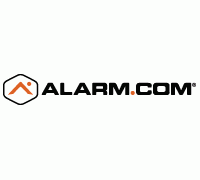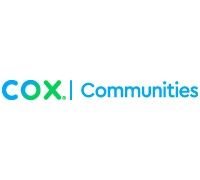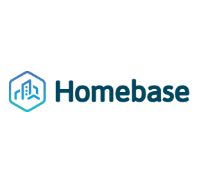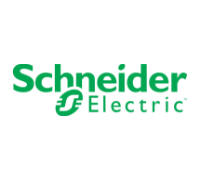Intel Corporation: Decreasing Costs and Rising Demand Fuel Potential Growth of Connected Consumer Market
 Mark Skarpness, Director of Embedded Software, Open Source Technology Center at Intel Corporation, discusses current and future opportunities in the connected consumer market:
Mark Skarpness, Director of Embedded Software, Open Source Technology Center at Intel Corporation, discusses current and future opportunities in the connected consumer market:
What is the most important next step to engage consumers in smart home solutions, connected entertainment, and/or value-added services like tech support and connected health?
There are multiple steps that need to be taken to engage the customers in smart home solutions
-
Ease of integration and build out interoperability among devices
-
Building customer awareness
-
Bring down cost of solutions and services surrounding the smart home and connected entertainment solutions and related services
-
Cloud, DIY, Service Providers or Access Providers or a combination of all will serve as the control points to drive the market
-
Security – privacy of data/ home and strong identity protection and ease of integrating and administering security
What is the biggest challenge your company faces in 2015?
Looking at the Internet of Things (IoT), where devices are connecting to the Internet, integrating greater compute capabilities, and using data analytics to extract meaningful information transforming businesses while creating new revenue models for players across the value chain, we feel that IoT adoption has been hampered for a number of reasons...
-
The need for robust, end to end security is often the first order of business once devices are connected but solutions are lagging and are difficult to deploy.
-
Many aspects of the market have been served by vertical, purpose-built solutions that are NOT open and scalable.
-
The convergence of IT and OT is like two worlds colliding with different viewpoints by each party on how to address business needs.
-
Connectivity is a challenge with 85% of device yet to be connected and so many varieties of devices, their capabilities and technology limitations.
Specifically in the Home: Currently there are dozens of wireless technologies being used in the connected home today. Even within the wireless technologies themselves, there are competing protocol extensions and data models. While each of the technologies in the market today have merit, as an industry we need to reduce the fragmentation. This fragmentation is creating confusion with the consumer and driving cost into the HW/SW platforms. Zigbee and Z-wave seem to have the early lead, but Wi-Fi and Bluetooth have such a huge ecosystem that we anticipate that they will be a force in the near term as well.
-
Data is underutilized which hampers a solid ROI to the business to justify the IOT investment for either cost savings or for new revenue generation.
-
Lack of standards slows decision making and adoption.
-
Robust software and hardware solutions that allow for ease of development and deployment of solutions
Intel has teams who are devoted to defining and developing solutions to address these challenges.
What is the biggest driver for the connected consumer market?
Broadband penetration due to decreasing cost in bandwidth, decreasing cost in sensors, decreasing cost in processing, increase in number of mobile devices in the home, and consumer demand and expectations for smarter devices fuel further potential growth.
What are the most important initiatives your company is taking in 2015?
Intel sees the opportunity to be a leader and a supplier…delivering a product portfolio supporting a horizontal set of offerings that will overcome the noted challenges and tip IoT economics in a more positive direction both for cost savings and for new business generation through re-usable, pre-configured, pre-validated HW and SW building blocks within their product portfolio.
These options allows organizations big and small to accelerate their own IoT solutions.
1) Re-usable, pre-configured, pre-validated building blocks that the ecosystem can use to design and deploy IoT solutions across different vertical markets.
-
Standardized hardware platforms that are optimized for workload, performance, and cost
2) Seamless and secure connected devices; delivering trusted data to the cloud, and delivering value through analytics and enabling new services
-
Interoperable hardware, software and services portfolio spanning from the edge to the cloud
-
The vision is secure and reliable device discovery and connectivity across multiple OS’s, platforms, and technologies is a foundational capability for the IoT
-
OIC is a group of industry leaders working together to deliver a connectivity framework via a standards specification, an open source implementation, and a certification program that will improve interoperability between the billions of devices making up the IoT
-
In addition, the need for robust, end to end security is often the first order of business once devices are connected but solutions are lagging and are difficult to deploy.
-
Integrating multiple layers of security at the outset enables trusted data transmission necessary for successful IoT deployments.
3) Bringing open source solutions to the forefront of the IoT development to help the IoT developer to easily, quickly and affordably bring innovative new products to market
-
Open source is a platform that supports the development paradigm that has evolved as the IoT has grown which is the need to support different devices/ capabilities, there are growing number of SW solution options, and a need to prototype quickly and easily.
-
Open source provides solutions that help solve these challenges by offering developers the way to scale, tools to develop their solution and broad adoption of standards to ensure interoperability
Describe your vision for the smart home and entertainment markets in 2020.
1) Intel’s vision/goal is to work towards a Smart Home that anticipates occupant needs.
-
Turning a connected home into an intelligent home requires new technologies like voice and gesture control, Real Sense and video analytics, and to create a single dashboard to control everything in your home.
-
We also think that the Future of the connected home is based on connecting devices to the internet via a hub/gateway and instead of the device directly connecting to the internet. This provides security and privacy advantages and optimizes network demands.
2) Establishing standards to ensure interoperability and address the challenge of fragmentation through:
-
Connectivity/discovery/security between devices, the gateway, and the cloud, and extending into cloud to cloud interactions is key to consumer adoption.
-
Several efforts have been kicked-off to begin moving towards standardization, but a great deal more work is in front of us to reach a level of openness and standardization that will allow for seamless and simple interoperability.
-
Until we reach a point when the consumer has confidence that their IoT device will just work, we will not be able to truly unlock the tremendous potential of the Smart Home.
-
A key initiative to start to address fragmentation and enable device connectivity regardless of the vendor and underlying implementation is the Open Interconnect Consortium. Intel & industry leaders formed the OIC and are driving this as a standard for home and personal devices.
3) There is a broad suite of open source software solutions that allow IoT developers to quickly, easily and affordably integrate these into IoT development cycles and IoT products
-
More and more developers are seeking out ways to develop quickly, easily and affordably, all while staying on the cutting edge of technology. Open source provides that benefit.
-
Today many are using open source solutions that aren’t built specifically with connected devices in mind.
-
Our vision is to ensure that there are open source projects and tools available with the IoT developer needs in mind.
Mark Skarpness will be speaking on the panel “Standards and Interoperability: Creating Competition through Cooperation” at 11:15 AM during CONNECTIONS in San Francisco, CA, May 21, 2015. He will be joined by other company representatives from CEL, Insteon, Sigma Designs/Z-Wave, and ULE Alliance.
For more information on CONNECTIONS speakers, sessions, or topics, visit www.connectionsus.com. Registration is still open!
Next: Sigma Designs/Z-Wave: Increase of Mobile Devices Increases Consumer Demand for Control of Smart Home Devices and Systems
Previous: Assurant Solutions: Increasing Consumer Dependency Creates Opportunities for Companies




 Mark Skarpness
Mark Skarpness










